Reports
Is All Weed Basically The Same? Here’s What Scientists Recently Found
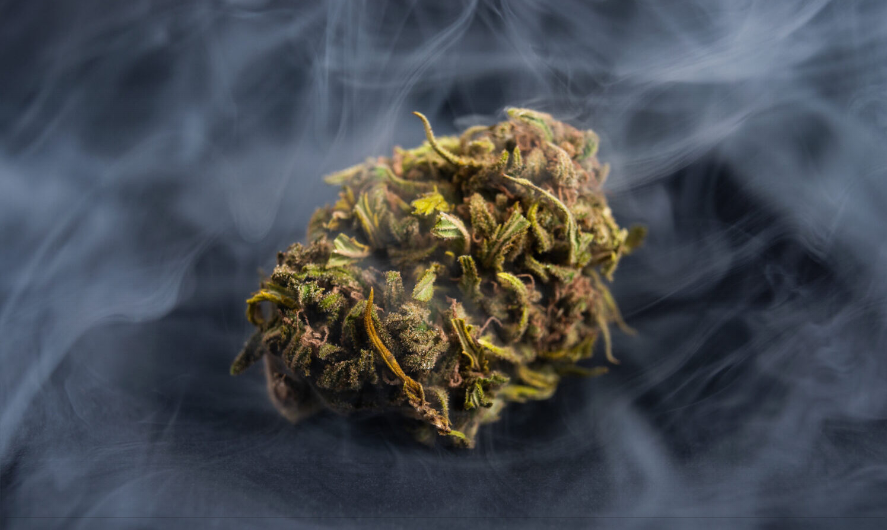
In a recent study, researchers shared the findings of the biggest current analysis about the chemical composition in cannabis products.
When consumers shop around for cannabis flower, there are thousands of strain names to choose from. These cultivars are said to be unique in their chemical and genetic makeup, with a special terpene and flavonoid content as well as THC or CBD. That should make things easier, right?
Then again, when we’re out buying marijuana products, we also encounter labels such as sativa (energizing, uplifting), indica (relaxing, sedating), or hybrid (a combination of both). It should be simple enough. But the truth is that we can no longer rely on these names.

Cannabis Strains Are Now Irrelevant
In a recent study published in the journal PLOS One, researchers shared the findings of the biggest current analysis about the chemical composition in cannabis products. They analyzed around 90,000 cannabis samples taken from six states, checked their terpene content, cannabinoid makeup, and other chemical analysis from Leafly and other sites. They found that most of the cannabinoids available in recreational cannabis is nothing more than just THC.
The authors stated that labels “do not consistently align with the observed chemical diversity”. In fact, the study’s authors recommend that cannabis products have a proper labeling system just like what we have for the nutrition facts label with food.
“Our findings suggest that the prevailing labeling system is not an effective or safe way to provide information about these products,” says Brian Keegan, co-author of the study. “This is a real challenge for an industry that is trying to professionalize itself,” says the assistant professor of Information Science at CU Boulder, reports the CU Boulder Today.
This is revealing, given the countless names that marijuana growers and marketers have had to come up with over the past few years especially with the explosion of strains that has made the mainstream market. Memorable names are a must: think about Maui Wowie, Stinky Pinky, Han Solo Burger, Alaskan Thunder Fuck are just some of the few famous strain names.
After all, a strain name referring to one that you had an enjoyable experience with while high will stick around. It’s what you will ask your budtender for next time, and it’s a strain you’ll tell your friends about. Clever names are memorable and will pique more interest.
However, as this and other studies show, a name is pretty much all you get. Cannabis genetics change depending on who breeds it and how, so it can be rare to find 100% of the exact same kind of toke experience, genetics, terpenes, chemical makeup, and other factors if you buy your weed of the same strain elsewhere.
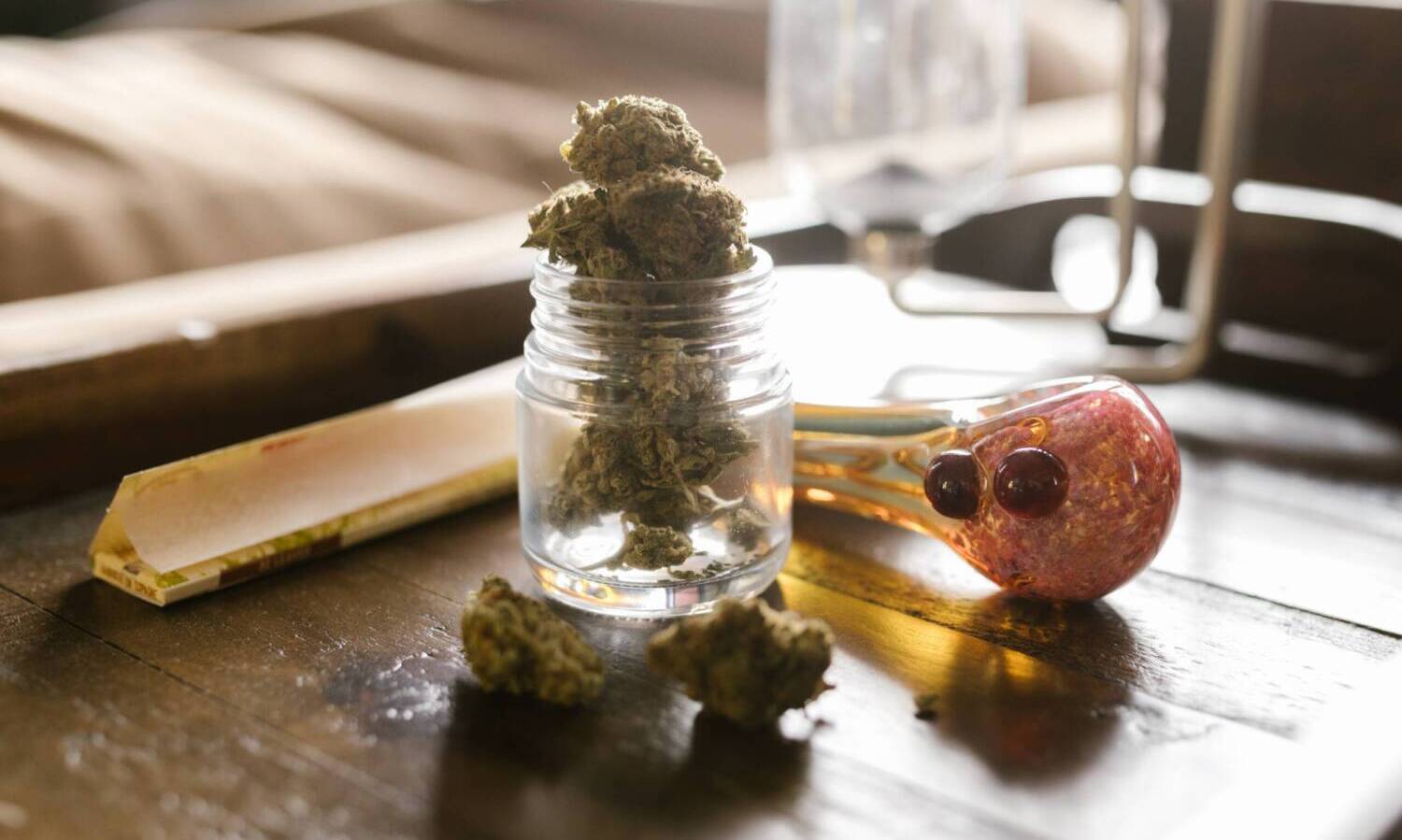
RELATED: Is The Future Of Weed Seedless? How Triploid Cannabis Could Lead To New Strains
The study also says that identifying strains by sativa, indica, and hybrid has nothing to do with the cannabis’s chemical reality. However, they did say that there were three types of terpene combinations that were prominent in specific strains: cannabis strains high in limonene and caryophyllene, pinene and myrcene, and then those with rich myrcene and terpinolene content. These have nothing to do with their current classifications, as the researchers said, they “do not neatly correspond to the indica, sativa and hybrid labeling scheme.”
“In other words, it is likely that a sample with the label indica will have an indistinguishable terpene composition as samples labelled sativa or hybrid,” they say.
Currently, cannabis product marketers have to disclose how much THC and CBD are in a product but there is no regulation that requires them to share what other compounds are in the plant, such as what terpenes or flavonoids there are. On top of that, they can call the strain or product whatever they want. “A farmer can’t just pick up an apple and decide to call it a Golden Delicious. A beer manufacturer can’t just arbitrarily label their product a Double IPA. There are standards. But that is not the case for the cannabis industry,” explains Nick Jikomes, co-author of the study, who is also a director of science and innovation for Leafly.
Genetic Differences, Lab Tests More Important
There have been other studies that share the same results. An older study from 2015, also published in PLoS One, was conducted by researchers from Dalhousie University in Nova Scotia. They wanted to understand the genetic differences in cannabis so they analyzed around 14,031 single-point factors in DNA of 81 cannabis samples as well as 43 hemp samples.
They also took a look into the variations among marijuana species, and found that there were only “moderate” differences between indica and sativa, but it wasn’t as significant as we think they are.
Then another study from 2021 involved researchers analyzing thousands of marijuana samples that represented around 396 strain names in a lab. What was shocking was that these samples represented to be nothing more than 3 chemical varieties of pot, leaving the scientists to conclude that strain names don’t mean anything at all. “The very limited variability in chemical profiles shows that most of these chemovars, while named differently, are almost the same or at least very similar,” they wrote.
The researchers also discussed the absence of standardization in the cannabis industry especially for strain names, adding that they were “poorly or not at all defined.” For us consumers, this leaves us feeling confused, with the lack of information on packaging, consistency, chemical phenotype, genotype, and more.
For these reasons, recreational and medical users are better off buying cannabis products that have a Certificate of Analysis (COA). The COA is a document provided by a third-party laboratory that shows you exactly what’s in your cannabis, and this is the closest thing we can get to a “nutrition facts panel” for cannabis as of the moment. It acts as a quality check of sorts, and depending on the test results or laboratory, can provide consumers with a range of information including microbiological testing, cannabinoid concentrates, terpene profile, residual solvents, and heavy metals if any.
Business
A Tipping Point for Cannabis: President Trump Champions CBD & Cannabis Science on Truth Social

When the President of the United States shares a video about the life changing potential of hemp derived CBD on his personal social media platform, it is more than news, it is a cultural shift.
For decades our government lied to us about cannabis. It demonized the plant, waged war on its users, and filled prisons while allowing pharmaceutical companies to flood the nation with addictive and deadly drugs. For over a century we have been fighting uphill, not just for legalization, but for truth, for science, and for the right to heal ourselves naturally.
Now in 2025, the most powerful political figure on Earth is using his own voice and platform to talk about the endocannabinoid system and the science backed benefits of CBD. That is monumental. It is validation for everyone who has fought, been arrested, been silenced, and been dismissed for telling this truth. The President’s video post is already being described as a pivotal moment in cannabis history, and President Trump CBD Cannabis Science Truth Social is trending across platforms as advocates celebrate the breakthrough.
The Science Behind the Endocannabinoid System
The video begins by introducing something most people, including many doctors, still know little about, the endocannabinoid system. Discovered in the 1990s, the ECS is a network of receptors and signaling molecules that works as the body’s master regulator, coordinating communication between major systems like the nervous, immune, cardiovascular, and digestive systems.
The roots of this discovery go back much further. CBD was first isolated in 1940 by American chemist Roger Adams, but it was Dr. Raphael Mechoulam, an Israeli organic chemist, who fully elucidated the chemical structure of CBD and identified its stereochemistry in the 1960s. His pioneering work not only opened the door to modern cannabinoid science but also earned him the title “Godfather of Cannabis Research.” It was this foundation that led to the identification of the endocannabinoid system itself decades later, revealing how cannabinoids interact with our physiology on a fundamental level.
The ECS is now widely recognized as a vital part of human biology, with extensive research supported by the National Institutes of Health. When functioning properly, the ECS acts like the conductor of an orchestra, ensuring every section plays in harmony. As we age, the system weakens. That imbalance is linked to inflammation, chronic pain, cognitive decline, sleep problems, and many other conditions associated with aging.
Mainstream medicine often addresses these issues with pharmaceutical band aids, dangerous and addictive drugs that treat symptoms rather than root causes. Lifestyle changes such as diet and exercise help, but they only partially support the ECS and do so slowly over time.
Hemp Derived CBD: A Game Changer for Aging
Here is where the science gets exciting. As the video explains, the ECS can be restored much more quickly with hemp derived CBD. Strengthening this system naturally helps the body regain balance, reducing pain, improving sleep, lowering stress, slowing disease progression, and even extending healthy lifespan.
It is not theoretical. One in five seniors is already using CBD to manage pain, arthritis, cancer symptoms, sleep disorders, Alzheimer’s, and more. Despite decades of research and acknowledgment from institutions like the National Institutes of Health, most physicians receive no training on the ECS. There are still no FDA standards for CBD products on the market. If that were the case for any other class of medicine, it would be considered malpractice.
The World Health Organization has confirmed CBD’s excellent safety profile and non addictive nature in its critical review report. The result is that millions of older Americans are suffering unnecessarily when a safe and natural solution exists.
Hemp derived CBD is a powerful first step in restoring balance to the endocannabinoid system, but it is only part of the picture. Research shows that full spectrum cannabis extracts, which include a broader range of cannabinoids and terpenes, can work even more effectively. Complete concentrated cannabis oil, containing the full spectrum of natural endocannabinoids, may deliver the most profound results for certain patients. Expanding access to these therapies will be essential if we want to unlock the full healing potential of this plant.
The Economic and Social Impact
The video cites a powerful figure. A PricewaterhouseCoopers analysis estimates that fully integrating cannabis into the healthcare system could save the United States nearly 64 billion dollars annually. These savings reflect reduced pharmaceutical dependency, fewer hospitalizations, improved chronic disease outcomes, and enhanced quality of life for aging Americans. You can read more about PwC’s research on healthcare innovation here.
It is a financial argument, but it is also a moral one. Why should our elders endure pain, anxiety, and cognitive decline when nature has given us tools to help them live longer, happier, and healthier lives?
A Call to Action: Finish What the Farm Bill Started
The message concludes by crediting the 2018 Farm Bill, championed by President Trump, for legalizing hemp and laying the groundwork for today’s CBD market. The Farm Bill was just the first step.
Now the call is for bold next moves.
- Educate doctors about the endocannabinoid system
- Include CBD under Medicare coverage
- Provide clear federal standards for CBD quality and dosing
These steps would constitute the most significant senior health reform in modern history, one that would transform aging and cement a powerful legacy for any administration that makes it happen.
What This Means for Future Cannabis Medicine
For those of us who have been in the cannabis community for decades, this is not just another news story. It is a signal that our movement is winning. A conversation that was once criminalized and censored is now being amplified by the President of the United States on his own platform.
It means the science is undeniable. It means the truth can no longer be buried. It means the wall of prohibition is cracking, not just legally, but culturally, scientifically, and politically.
It also means that everything we have been fighting for at 420 Magazine since 1993, education, access, healing, and justice, is finally moving full steam ahead. The President Trump CBD Cannabis Science Truth Social moment is proof that science and policy are finally converging.
Business
Pot Odor Does Not Justify Probable Cause for Vehicle Searches, Minnesota Court Affirms
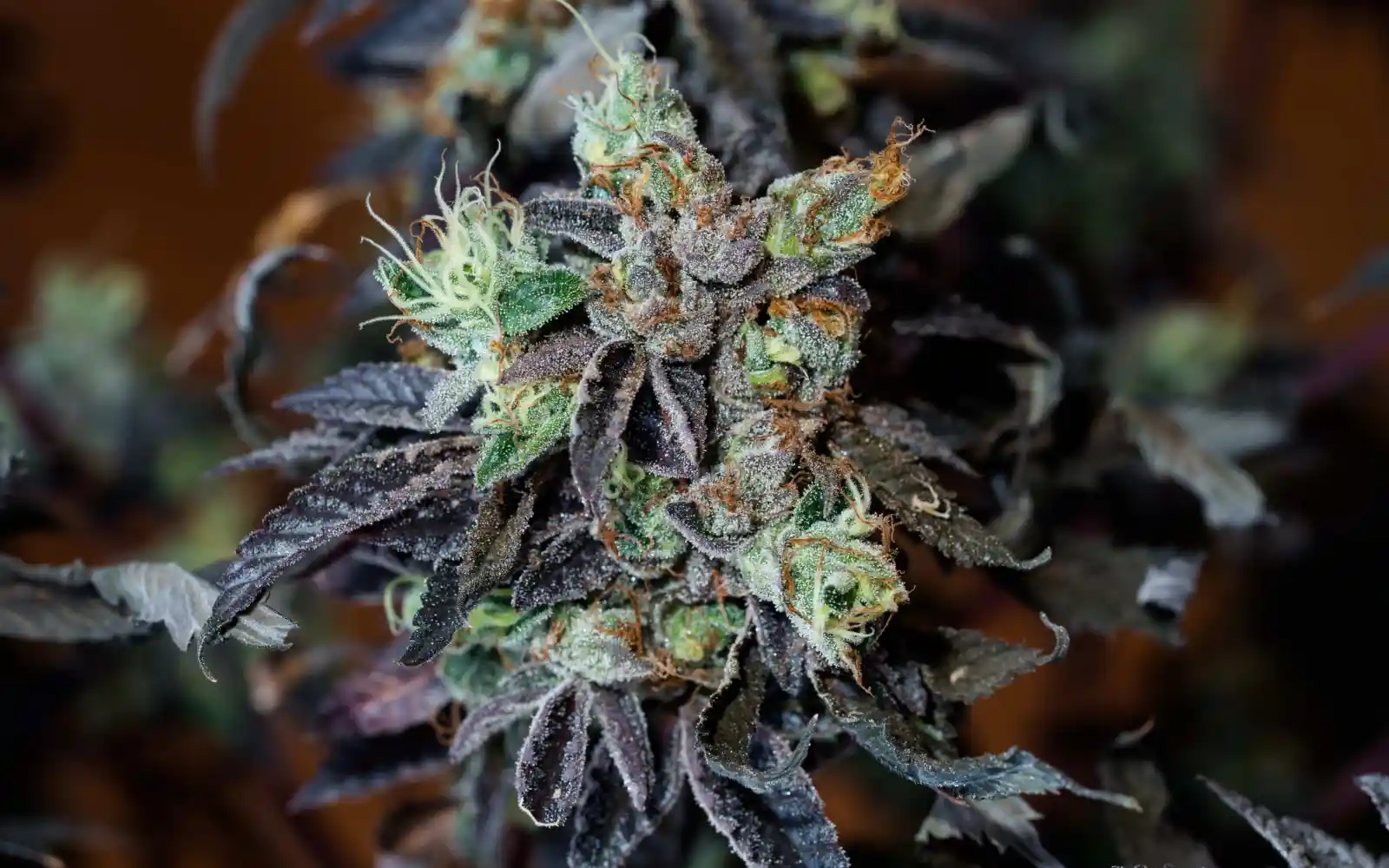
The Minnesota Supreme Court affirmed that cannabis odor does not constitute probable cause to search a vehicle.
If Minnesota police search a vehicle solely based upon the smell of pot, they can’t justify searching a vehicle, even if there is evidence found of other alleged crimes. Even after appealing a lower court decision to suppress the evidence—twice—the Minnesota Supreme Court agreed, and the dismissal of his charges stands.
In a ruling filed regarding a case the State of Minnesota Court of Appeals on Sept. 13, the Minnesota Supreme Court affirmed that cannabis odor does not constitute probable cause to search a vehicle.
The case has been ongoing for two years. On July 5, 2021, just before 10 p.m., a Litchfield police officer stopped a car for an obscure local law: the light bar mounted on the vehicle’s grill had more auxiliary driving lights than are permitted under Minnesota law. The officer asked the driver, Adam Lloyd Torgerson, for his license and registration. Torgerson, his wife, and his child were present in the vehicle. The officer stated that he smelled pot and asked Torgerson if there was any reason for the odor, which he initially denied. But cops found a lot more than just pot.
A backup officer was called in. The couple denied possessing any pot, but Torgerson admitted to smoking weed in the past. The second officer stated that the weed odor gave them probable cause to search the vehicle and ordered them to exit the vehicle. The first officer searched the vehicle and found a film canister, three pipes, and a small plastic bag in the center console. The plastic bag contained a white powder and the film canister contained meth, which was confirmed in a field test.
Torgenson was charged with possession of meth pipe in the presence of a minor and fifth-degree possession of a controlled substance after the unwarranted search of Torgerson’s vehicle.
Police Aren’t Allowed to Do That, Multiple Courts Rule
But the search had one major problem—cops weren’t searching for a meth pipe. They only searched his car because they could smell pot, and the meth and paraphernalia were a surprise for everyone. Still, they had no grounds to search the vehicle. The man’s charges were later dismissed after the district court determined the odor of cannabis alone was insufficient basis for probable cause to search the vehicle, regardless of whatever other drug paraphernalia they found.
The state appealed the case, but the Minnesota Court of Appeals affirmed the district court’s decision. The case was appealed a second time, this time to the Minnesota Supreme Court, which agreed with the lower court’s ruling.
“This search was justified only by the odor of marijuana emanating from the vehicle,” the Minnesota Supreme Court decision reads. “Torgerson moved to suppress the evidence found during the search, arguing that the odor of marijuana, alone, is insufficient to create the requisite probable cause to search a vehicle under the automobile exception to the warrant requirement. The district court granted Torgerson’s motion, suppressed the evidence, and dismissed the complaint. The State appealed. The court of appeals affirmed the district court’s suppression order. Because we conclude that the odor of marijuana emanating from a vehicle, alone, is insufficient to create the requisite probable cause to search a vehicle under the automobile exception to the warrant requirement, we affirm.”
It amounts to basic human rights that apply—regardless of whether or not a person is addicted to drugs.
Other States do Precisely the Same Regarding Pot Odor as Probably Cause
An Illinois judge ruled in 2021 that the odor of cannabis is not sufficient grounds for police to search a vehicle without a warrant during a traffic stop.
Daniel J. Dalton, Associate Judge of the 14th Judicial Circuit, issued a ruling in response to a motion to suppress evidence in the case of Vincent Molina, a medical cannabis patient arrested for cannabis possession last year.
In that case, Molina was arrested despite the decriminalization of small amounts of cannabis in Illinois in 2019 with the passage of the Illinois Cannabis Regulation and Tax Act.
In some states, the issue of probable cause and cannabis was defined through bills.
Last April, the Maryland House of Delegates approved a bill that reduces the penalties for public cannabis consumption and bars police from using the odor of cannabis as the basis for the search of an individual or auto. Under Maryland’s House Bill 1071, law enforcement officers would be prohibited from using the odor of raw or burnt cannabis as probable cause to search a person or vehicle.
The rulings represent the rights of citizens when they are pulled over by police, even if there are hard drugs involved.
Business
Legal Marijuana Handed A Nothing Burger From NY State

Following the chaos of the recreational weed rollout, the government is trying to figure out next steps. But it seems legal marijuana has been handed a nothing burger from NY state with their last rollout for potential cannabis retailers.. With an estimated $3.5 billion in sales at stake along with tax revenue for the state’s every growing budget, the fumble is costly for a significant number of players. And it has been a huge loss for the marijuana industry as a whole.
What was quickly seen as an opportunity was pounced on in the city with the most billionaires globally along with endless big and small entrepreneurs, and hustlers. Seeing a huge amount of cash on the table, players acted in a quickly in a way bureaucrats will never understand.
Embracing a Wild West approach, officials decriminalizated and fumbled licensed legalization of sales. Despite promises and initial outlines where existing medical marijuana dispensaries could switch to recreational and a fair, for government quick liscnese process, the state tossed it all in one stroke. In a vision of equity, officials decided to reserve the first retail licenses for felons and other “justice-involved” individuals. Lawsuits started, the desired licensees struggled to raise capital and over 1,600 unlicensed retail stores opened in NYC. For the small time players, they have set sidewalk card tables parks, selling roll-ups and handmade marijuana edibles, in full view of the police.
The updated systems was rolled out, but has left people confused, dispirited, and disappointed. The Office of Cannabis Management rolled out the previous Conditional Adult-Use Retail Dispensaries (CAURD) program with high hopes. Now, regulators voted to allow the state’s medical marijuana operators to apply for adult-use retail licenses. Multistate operators who have patiently acquired a majority of the state’s 10 registered organization.
“It was more like an orgy of minimalism. While they are getting ready to open the application window on October 4th (notably, originally it wasn’t intended to be a 60-day window, but rolling applications) for most license types (sans on-site consumption and delivery), they refused to address the CAURD program. Other than to suggest that it remains “a priority”, they have offered only some subtle hints in the guidance to the regulations. These include establishing a priority for retail applications which include secured real estate, which will be given priority after the initial 30-days of the 60-day application window have passed (although they do not define what that means). And noting that existing licensees may apply for an additional license so long as they comply with the rules of a two-tier system. The positive news is that these statements can be interpreted as an invitation to current CAURD licensees, many of whom will also meet other Social and Economic Equity (SEE) criteria entitling them to an additional priority.” shares Andrew Cooper, partner at Falcon Rappaport & Berkman LLP, one of the top cannabis law firms.
Unfortunately, there are multiple losers in the state’s unique approach. One is consumer and medical marijuana patients, including veterans. The unlicensed dispensaries are making a mint and overcharging customers due to high demand. Small investors and companies, including those who could be a player in the CAURD, will not have the financial to compete with multi-state and large players. And taxpayers will lose out for years to come as revue it lost to unlicensed dispensaries.
The good news, consumers will continue to find products easily over the next few years. There is even a thriving unlicensed dispensary a few blocks from City Hall.
While New York is awash with billionaires, fashion, food and smarts, common sense seems to be lack for making a good government plan.
Source: https://thefreshtoast.com/cannabis/legal-marijuana-handed-a-nothing-burger-from-ny-state/
-
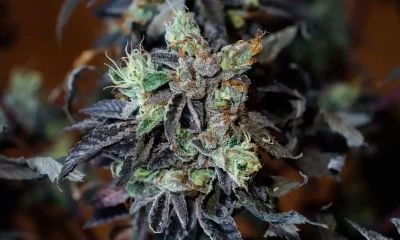
 Business2 years ago
Business2 years agoPot Odor Does Not Justify Probable Cause for Vehicle Searches, Minnesota Court Affirms
-

 Business2 years ago
Business2 years agoNew Mexico cannabis operator fined, loses license for alleged BioTrack fraud
-

 Business2 years ago
Business2 years agoAlabama to make another attempt Dec. 1 to award medical cannabis licenses
-
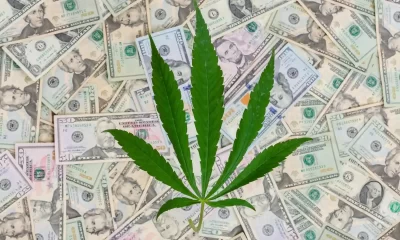
 Business2 years ago
Business2 years agoWashington State Pays Out $9.4 Million in Refunds Relating to Drug Convictions
-

 Business2 years ago
Business2 years agoMarijuana companies suing US attorney general in federal prohibition challenge
-

 Business2 years ago
Business2 years agoLegal Marijuana Handed A Nothing Burger From NY State
-

 Business2 years ago
Business2 years agoCan Cannabis Help Seasonal Depression
-

 Blogs2 years ago
Blogs2 years agoCannabis Art Is Flourishing On Etsy









